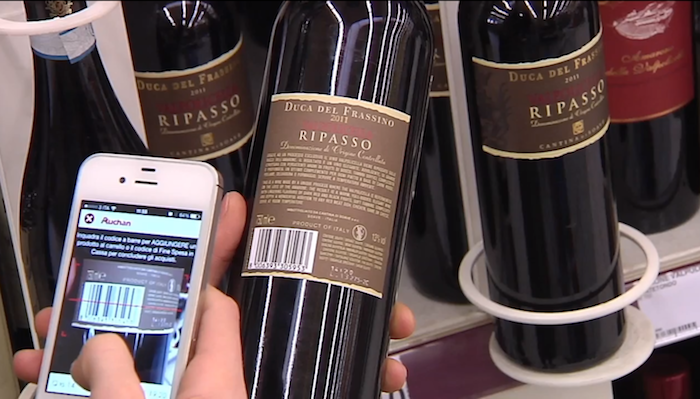
Technological innovation at the point of sale is a crucial issue because it can bring customers (back) to the physical store in conjunction with online channels. But where is large-scale distribution in Italy on this issue? From a comparison with other channels, a picture of positives and negatives emerges: highly advanced in certain cases and in certain types of innovation (self-scanning and self check out, digital coupons, in part Apps), but definitely behind in others (online sales, mobile in particular).
In food, a sector characterised by lower margins, high competition, repetitive low unit-value purchases and a long supply chain, most retailers are still focused on investments in the back-end, aimed primarily at integration with suppliers, creation of more efficient operations and effective stock management. But now they are turning to the point of sale, while still very little consideration is given to the multichannel approach.
A comparison with other sectors
While the intelligent changing room is a technology obviously designed for the clothing industry, there are also other innovations that make sense only in certain situations. For example, RFid tags are scarcely used in large-scale distribution at the point of sale due to the excessive cost compared to the product in question.
On the other hand, speeding up the buying process, according to the analysis of the Observatory
On Digital Innovation in Retail of the Politecnico di Milano, is one of the key factors influencing the adoption of innovative technologies (along with marginality, internationalisation, competition with the Dot Coms and supply chain structure). In food, 53% of the sample have already invested into self scanning and smart cart systems, which support the customer in the buying process, and 26% intend to do so in 2015. 50% of Italian retailers in the food sector of the sample have developed self check out systems, i.e. unattended tills capable of speeding up the customer exit process. Auchan and Coop Estense are experimenting Mobile self-scanning solutions in which customers use their mobile phone to scan products to be purchased.
Fast scanning (crucial in the point of sale where a large number of items are bought) but also fast payment (appreciated by everyone): Esselunga has already enabled all checkouts for contactless payment via NFC and smartphone, encountering slow but steady growth in this initial phase. On the other hand, another system gaining popularity and appreciated in department stores with interaction with sales staff which would not make much sense in large-scale distribution is the Mobile POS, tablet or smartphone transformed into check-out systems that allow the layout of the store to be significantly modified by bringing the till closer to the consumer.
There is a lot of interest in coupon and loyalty acceptance systems (digital or Mobile) that allow promotions to be sent in proximity and digital coupons to be redeemed directly at the store check out. With a dual objective: increase customer purchasing opportunities and increase the use of loyalty cards (23% of the sample have already invested and 43% intend to do so in 2015). Bennet and the PaM group are experimenting a Mobile couponing system promoted by telephone operators in interoperable mode.
Lagging behind in e-commerce
Two or three are doing it and only one in a widespread manner: we are speaking of e-commerce in large-scale distribution. Food is the sector that uses it least (13%) and the market share is still below 1%, while the most developed sectors are information technology and consumer electronics, where 88% of the sample sells online, publishing with 83% and clothing with 72%. Evident in these cases is the fierce competition from the more aggressive Dot Coms. Followed by cosmetics with 60%, furniture with 57%, do-it-yourself with 43% and department stores with 20%.
Esselunga, an early adopter, claims double-digit growth: “E-commerce helps bring the customer to the store and has now become Esselunga’s first store – said Luca Sorichetti, Director of Information Technology – while the App, developed for a bit of fun by a number of students in 2011, is now in full release and provides the possibility to customise product offerings to be purchased in the store, where kiosks are widely used by those still tied to the physical point of sale”.
The click and collect system that starts to be included in certain situations (Tigros, Auchan, Coop and Carrefour in certain stores) could change things significantly, as has been the case in France (+75% and 4 billion euros of turnover, equivalent to 5% of total large-scale distribution revenues).
Also the presence in mobile, increasingly used both inside and outside the store, is amongst the worst performers: as much as 44% has no presence. It must be said that among the Apps of Italian retailers, few have developed ad hoc features to be used in store.
Finally, social media are in a limbo for almost everyone; they are not widely implemented and there seems to be no interest in doing so.
A look to the future
There are certainly many services that can be delivered through multiple devices. The famous kiosks, for example, are used by Tesco to enable the comparison of smartphone models available in the store (technical specifications and prices) while Thomas Pink, again in the UK, uses digital tables to customise shirts and to provide interactive entertainment while waiting. The American StopandShop chain with smart carts, a self scanning system and custom coupons proposes products related to those scanned by the customer for purchase, with an increase in the average receipt of 10%.
The future at home? According to Luca Sorichetti it will be in the adoption of social media “where we have so far done very little”, in greater customer involvement through the multi-media narration of product features, in the co-creation of initiatives with customers and in the involvement of the next generation of “digital natives”.




